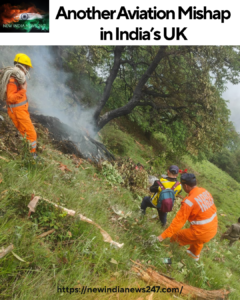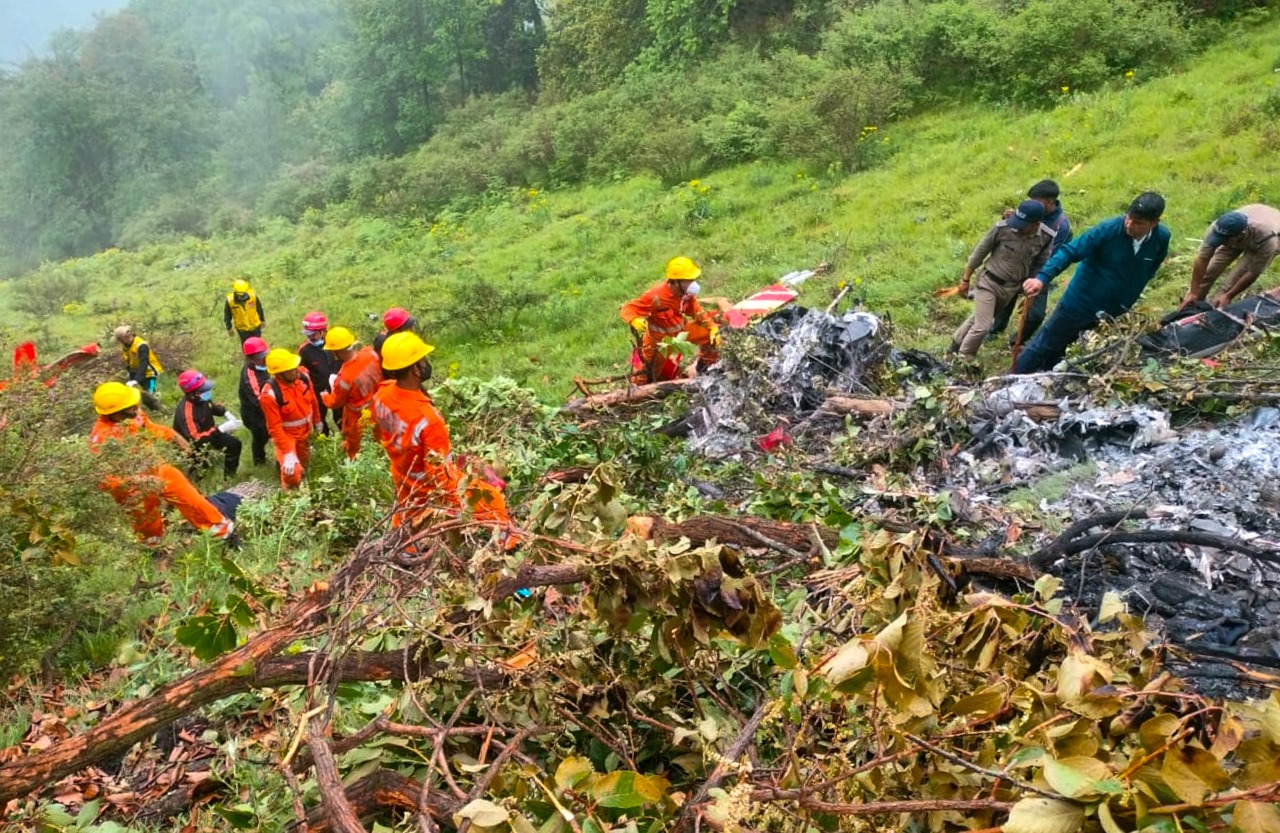The serene Himalayan skies over Uttarakhand, home to India’s revered Char Dham pilgrimage, have turned tragic again. Early on 15 June 2025, a Bell 407 helicopter operated by Aryan Aviation crashed barely minutes after lifting off from Kedarnath, killing the pilot and six pilgrims, including an infant. The news feels painfully familiar for locals, devotees, and aviation‑safety advocates alike. With the state recording six helicopter accidents on the Char Dham route in just forty days, many are asking whether Uttarakhand is fast becoming the epicentre of India’s aviation woes.
2nd Aviation Accident in a Week in Uttarakhand!
Only eight days earlier, on 7 June, a Kestrel Aviation AW119 helicopter made an emergency landing on the Kedarnath National Highway after a suspected technical failure. All six on board survived, yet the incident underscored how precarious high-altitude flying can be during the peak yatra season.
The latest Kedarnath Crash is grimmer in scale, tallying the state’s second fatal air disaster this month and its third serious incident since 8 May, when another charter chopper went down in Uttarkashi district, killing six. Taken together, these back-to-back mishaps reveal systemic cracks in Uttarakhand’s crash‑prone aviation corridor.

What Went Wrong?
Preliminary information points to three converging factors:
- Rapid‑Change Weather
Mountain wind‑shear, dense clouds, and sudden white‑outs are routine over Kedarnath’s 11,600‑ft altitude. Pilots have seconds to react, and older single‑engine helicopters, still common on the route, offer little redundancy when visibility collapses. - Operational Pressure
Operators run intense ferry schedules to serve thousands of pilgrims each day. Quick turn‑arounds can shrink the margin for thorough pre‑flight checks, while “get‑there‑itis” culture may nudge crews to fly when caution says no. - Regulatory and Infrastructure Gaps
Despite DGCA guidelines, Kedarnath’s three helipads have minimal instrument‑aided navigation. Pilots rely mainly on Visual Flight Rules, even at dawn when valley fog can mask ridgelines. The Aircraft Accident Investigation Bureau (AAIB) will examine whether flight‑tracking, terrain‑warning systems, and real‑time weather data were adequate.
Government’s Response
Within hours, the Ministry of Civil Aviation grounded Aryan Aviation’s Char Dham operations and suspended two pilots from other firms for earlier rule violations. The DGCA has signalled it may restrict flights during marginal weather windows and mandate twin‑engine helicopters or advanced avionics for routes above 10,000 ft.
Uttarakhand’s Chief Minister ordered a safety audit of all eight licensed yatra operators and asked the Border Roads Organisation to identify emergency landing strips along pilgrim corridors. Meanwhile, the state disaster‑response force has been told to stage rapid‑rescue teams closer to high‑traffic helipads.
Final Thoughts
Uttarakhand’s air network is not just a tourism booster; it is a lifeline that trims a two‑day trek into a ten‑minute hop for the elderly and infirm. Shutting it entirely would strand thousands and dilute local income. Yet the mounting body count proves the status quo is untenable. A sustainable path forward demands layered defences, newer, more capable aircraft, satellite‑linked weather monitoring, stricter dispatch rules, and continuous pilot mountain‑flying training.
Our Opinion
The “New India” that we are looking forward to is going to be filled with pride, success and a lot of prosperity. What we don’t need is these constant injections of eternal sadness. First the Boeing 787-8 Dreamliner and now this!
We need to start pointing fingers at the culprits now. it has been a year of ups and downs and the nation has been mourning for a long time. The only happiness we got was from “Operation Sindoor,” and even that was cut short.
The Kedarnath tragedy should mark a turning point, not another entry in a grim ledger. We urge regulators to fast-track stalled proposals for Performance-Based Navigation (PBN) corridors and to publish transparent safety records of charter operators so pilgrims can make informed choices. Operators must resist commercial pressure that pits profit against prudence, and the Centre must subsidise upgrades if smaller firms cannot shoulder the cost alone.
This month has been one of the worst in India’s aviation history, yet we are just at the halfway mark.
We will pray that these things stop happening and get back into OP Sindoor as soon as possible.
Till then…
Keep supporting guys…
We will try to remain as consistent as we can!
Stay tuned for more nationalistic news
This is New India
Signing off…
Also, you can connect with us on Instagram- https://www.instagram.com/p/DK6pOsFpVPu/


Leave a Reply